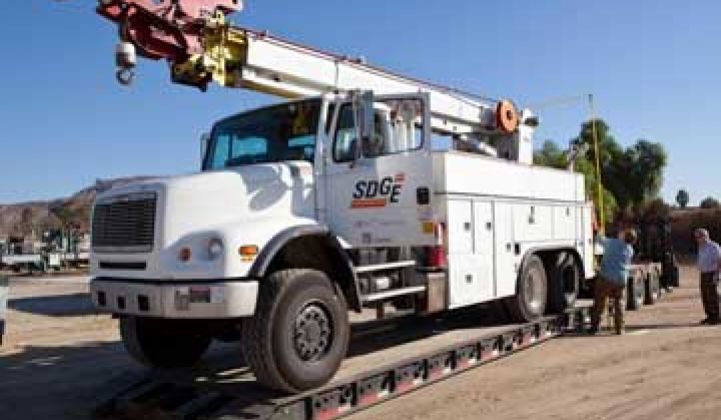About two weeks after Hurricane Sandy wreaked havoc on the mid-Atlantic, one utility stepped up and announced the launch of a sophisticated outage management system years in the planning.
The utility? San Diego Gas & Electric.
San Diego is a city awash in mild, sunny weather, but that doesn’t mean SDG&E is just sitting back and lapping up the beautiful climate. Instead, the utility, which sits in arguably the most progressive state for the industry, has rolled out an OMS that integrates a geographic information system (GIS) with its Oracle distribution management system (DMS) and smart meters to track outages during storms and to better organize planned outages.
“The ability to identify the outages more quickly is exciting,” said Vic Romero, director of asset management and smart grid at SDG&E.
About four years ago, SDG&E started thinking about bringing in multiple technologies, including the GIS and expanded mobility for field crews. Troubleshooters that were sent out after storms or problems had laptops in their trucks for years, but SDG&E now has mobile terminals for line crews as well. Various utilities are installing different aspects of smart grid, but there are only a handful that are integrating all of the elements -- including OMS, DMS, GIS and smart meters -- to reform the approach to outage management.
Two-way digital smart meters, which are being installed as part of California’s Energy Action Plan, allow SDG&E to know when power goes out at individual locations and integrate that information into its OMS. The system has only been in place for about two months, so there are no figures of savings as far as measured indices like SAIDI, said Romero, but there have been some other glimpses into the benefits the technology is providing.
“Advanced metering infrastructure lets us know fourteen minutes before the first customer call,” he said, “and there’s even more savings on top of that if it’s a breaker.” He noted that sometimes the utility has a crew on site before the first customer even calls.
The smart meters can also be used to manage and monitor power flow with a level of granularity that was not possible before. That visibility allows for better planned outages, said Romero.
During Sandy, a few utilities realized the advantages of their smart meters, including Baltimore Gas & Electric and PECO. Others are focusing on a 21st century OMS; Commonwealth Edison in Chicago is upgrading its system, for example, and EPB Chattanooga is already taking advantage of a cutting-edge system. SDG&E’s northern neighbor, Pacific Gas & Electric, is also investing heavily in reducing outages.
The next step for SDG&E is not to sit back and wait for a wind storm, but to add in self-healing capabilities using fault location isolation and service restoration, which can significantly cut outages further.
For operators, the advantage is more information at their fingertips and real-time intelligence, using software by Obvient, which was bought by ABB’s Ventyx. With the integration of the OMS and DMS, “We’re able to get much more information to the status of the system.”
Despite the fact that its territory is known for beautiful weather, SDG&E also boasts an impressive weather network with onsite meteorologists to better understand localized forecasts. Those forecasts can be used to know when to call for outside help before a storm even starts.
No matter what the project, for utilities like SDG&E, smart grid -- including upgraded outage management -- is simply an evolution. “We don’t stay still,” said Romero.



